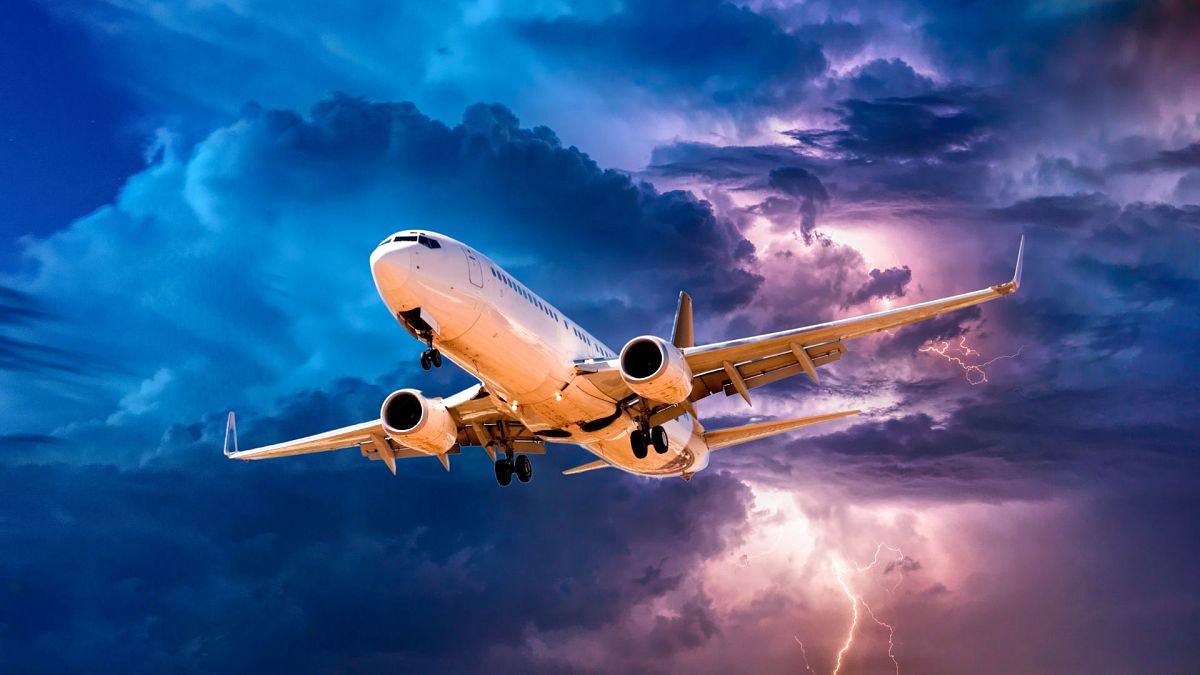Travel
Revealed: The European flight routes with the worst turbulence

The Rise of Turbulence in 2024: Understanding the Growing Concern
In 2024, the world witnessed an unprecedented number of turbulence-related incidents on commercial flights, making it a year that brought this issue to the forefront of aviation safety discussions. Headlines were dominated by reports of injuries caused by in-flight turbulence, with one tragic incident involving a Singapore Airlines flight resulting in the first fatality due to turbulence since 1997. This increase in reported turbulence-related events has raised concerns among passengers and aviation experts alike. According to data from the US Federal Aviation Administration (FAA), between 2009 and 2023, 37 passengers and 146 crew members were seriously injured due to turbulence, making it the leading cause of in-flight injuries. This trend has prompted questions about why turbulence is becoming more common and how it impacts different regions around the world.
Europe’s Most Turbulent Flight Routes
New research from Turbli, a turbulence tracking website, has identified the most turbulent flight routes in Europe. The findings reveal that eight out of the top ten most turbulent routes either begin or end in Switzerland, with many of these flights passing over or around the Alps. To measure the likelihood of turbulence, Turbli uses the eddy dissipation rate (EDR), a standardized metric endorsed by the International Civil Aviation Organization (ICAO) and the World Meteorological Organization (WMO). The EDR values for these routes range from 14.67 to 16.07, with the Nice-Geneva route topping the list at 16.07. While these values fall under the category of "light" to "moderate" turbulence, they are still significant enough to cause discomfort and potential danger for passengers and crew.
Why Turbulence is More Common Near Mountains
Turbulence near mountainous regions is a well-documented phenomenon, and the Alps in Europe are no exception. The interaction between wind and terrain plays a crucial role in creating turbulent conditions. When winds encounter mountainous areas, they are forced to rise over peaks, creating updrafts. These updrafts can then hit stable air barriers at higher altitudes, forcing the air back down and creating downdrafts. Additionally, high peaks can generate "mountain waves," which are oscillations in the atmosphere caused by disturbances in horizontal airflow. These waves can produce vertical currents as strong as 2,000 feet per minute, leading to bumpy flights. Temperature and humidity also amplify turbulence, with warmer, more humid air contributing to more intense turbulent episodes. This explains why routes over mountain ranges like the Andes in South America, which experience higher temperatures and humidity, are even more turbulent than those in Europe.
The Global Picture: Turbulence Beyond Europe
While Europe’s most turbulent routes are notable, they pale in comparison to the most turbulent routes globally. The top three most turbulent routes in the world are all located in South America, traversing the Andes mountain range. The Mendoza to Santiago route, with an EDR of 24.68, is the most turbulent, followed by Cordoba to Santiago and Mendoza to Salta. These routes experience more severe turbulence due to the unique combination of geography, climate, and weather patterns in the region. Despite the higher EDR values, it’s important to note that no routes worldwide are classified as "strong" (EDR 40-60) or "extreme" (EDR 80-100) on a yearly average basis. However, individual incidents of extreme turbulence can and do occur, posing significant risks to aircraft and their occupants.
Is Turbulence Getting Worse, and Should You Be Worried?
Experts agree that turbulence is likely becoming more frequent and intense due to climate change. Rising global temperatures are leading to greater extremes in weather, including stronger and more unpredictable storms. The University of Reading predicts that by 2050, turbulence incidents will occur twice as often as they do today. This projection underscores the need for the aviation industry to adapt and improve its strategies for mitigating the impacts of turbulence. While modern aircraft are designed to withstand even the most extreme turbulence without sustaining damage, passengers and crew remain vulnerable, especially if they are not securely fastened in their seats. In 2024, all passengers who followed safety protocols and kept their seatbelts fastened during turbulent episodes walked away unharmed, while those who were not secured suffered the most severe injuries.
Keeping Passengers Safe: The Aviation Industry’s Response
The aviation industry is taking proactive steps to address the growing challenge of turbulence. The International Air Transport Association (IATA) launched its Turbulence Aware Platform in 2018, which now collects and shares data from over 2,600 aircraft operated by 25 airlines. This platform provides pilots with real-time information to better predict and avoid turbulent areas. Additionally, pilots rely on advanced weather radar systems and real-time reports from other flights to navigate through potentially dangerous skies. Despite these efforts, clear air turbulence (CAT), which lacks visible indicators, remains nearly impossible to detect. According to the National Transportation Safety Bureau (NTSB), in 28% of turbulence-related incidents, flight crews received no prior warning. This highlights the importance of strict adherence to safety protocols, particularly the consistent use of seatbelts by passengers. While the risks associated with turbulence are real, the aviation industry’s commitment to safety and innovation continues to make air travel one of the safest modes of transportation. By staying informed and following safety guidelines, passengers can minimize their risks and enjoy a smoother flying experience.











